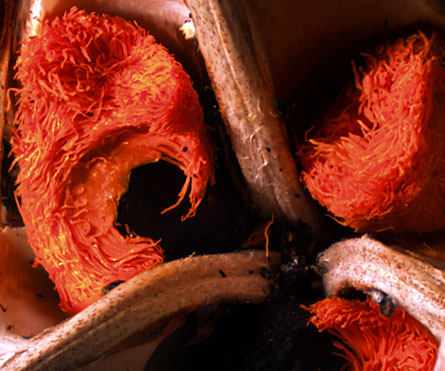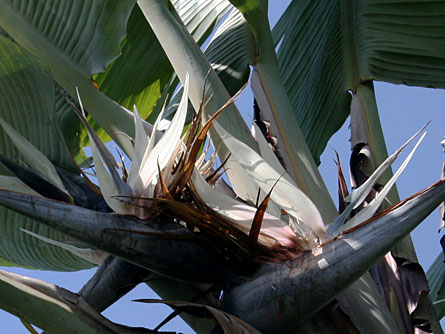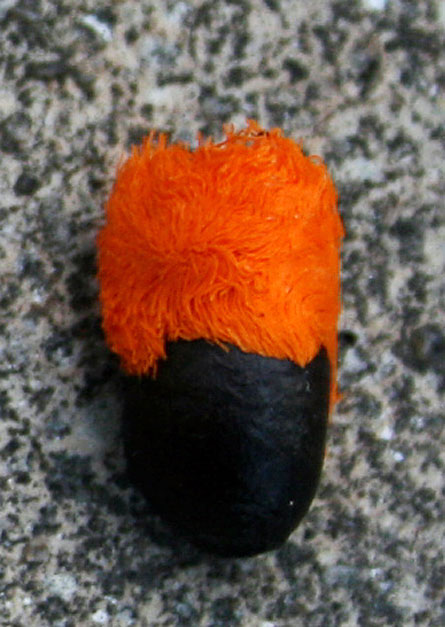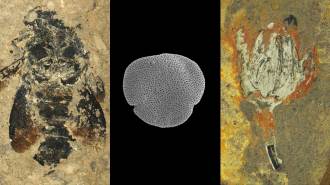The pigment bilirubin, long known as a leftover in the breakdown of animal blood, has turned up in the blood-free world of plants.



In people and many other animals, bilirubin puts the yellow into bruises and into the complexion of jaundice sufferers.
Now it turns out that bilirubin also puts the screaming orange into the fuzz on seeds of the white bird of paradise tree, says Cary L. Pirone of Florida International University in Miami. A sister species with orange and blue flowers also carries bilirubin, Pirone and her colleagues report online February 10 in the Journal of the American Chemical Society.
“It’s the first time bilirubin has been found in the plant kingdom,” Pirone says.
This flashy pigment has been hiding in plain sight in tropical gardens virtually worldwide.
“The birds of paradises are not rare plants,” says botanist John Kress of the Smithsonian National Museum of Natural History in Washington, D.C. “But here is a wonderful new discovery.”
Black, pea-sized seeds of the white bird of paradise tree (Strelitzia nicolai) grow an aril, or tuft of waxy ribbons covering each seed base. The aril, as Pirone puts it, looks “shockingly orange.”
Intense color may help catch the eye of passing birds, known to eat the plant’s seeds and thus give the seeds a lift to new territory. Unlike many other plant colors, this orange doesn’t fade easily, says coauthor David Lee, also of Florida International. He has found arils of seed specimens still glowing after decades in an herbarium.
Pirone began studying the orange pigment serendipitously. Examining arils in the bird of paradise family, she found that the orange compound didn’t match the chemical properties of any known plant pigments. The light wavelengths the pigment absorbed didn’t fit the patterns for carotenoids, for example, but the way it reacted with polar versus nonpolar solvents didn’t make sense for other pigment classes.
When Pirone worked out the mass of the pigment molecules, bilirubin emerged as one of the possible suspects. To pin down the pigment’s identity, she needed to run a more detailed test, exposing the pigment to a magnetic field. That required at least a milligram of the pure compound, but the purification method she had used for tiny quantities failed when she tried to scale it up. In the end, she repeated the small-scale procedure some two dozen times to get a quantity she could use.
The nuclear magnetic resonance tests confirmed that Pirone had bilirubin.
The bilirubin in plants doesn’t come from breaking down hemoglobin, the compound that gives blood its red hue. But pigments in hemoglobin and plants’ light-trapping chlorophyll molecules have similar ring structures, says plant biochemist Dean DellaPenna of Michigan State University in East Lansing. Breaking down chlorophyll can yield bilirubin too.
Plants maintain tight control over their powerful chlorophyll molecules — “harvesting light and splitting water is risky business,” DellaPenna says. Biochemists are still working out the steps for chlorophyll breakdown.
Researchers have found that plant enzymes open the chlorophyll molecule to form a substance that could turn into bilirubin with just one more step. In looking at the new paper, DellaPenna says, “The most interesting thing is that this suggests the first couple of steps of degradation are identical in plants and animals.”







